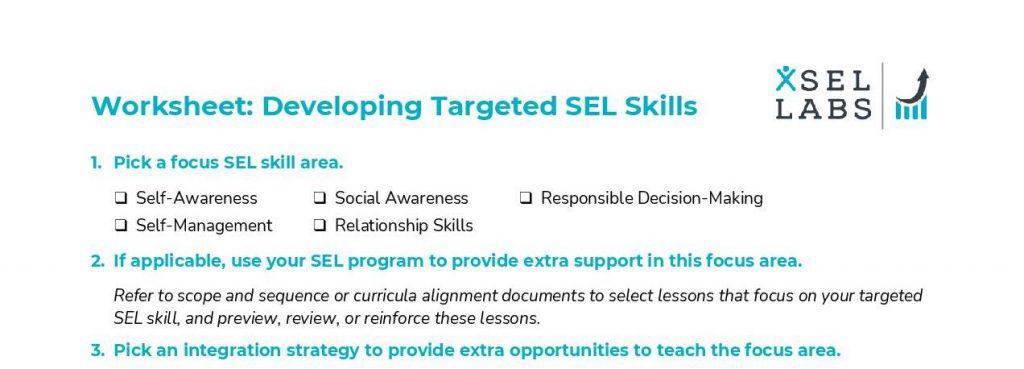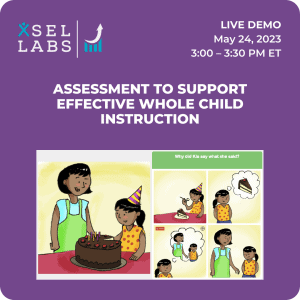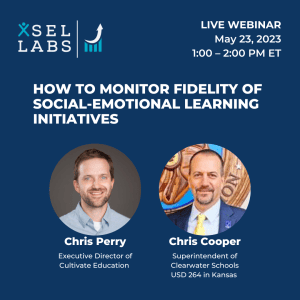We exist to help our partners use high-quality assessment data to guide their SEL practice. Many of our school and district partners, upon receiving their SEL assessment reports, wonder how to put their data into action. The good news is that educators can use assessment data to take four straightforward actions to nurture students’ SEL skills.
Setting the Stage: Using Assessment Results to Pick a Skill
The first step is to simplify the job by picking a focus area—a specific SEL skill—that students need to learn. With our assessments, teachers can do this by looking at their classroom summary report and picking a skill students are struggling with. Teachers may continue to teach the full spectrum of social and emotional skills. Still, by picking a focus area, they can implement strategies to give children extra opportunities to practice and learn that skill. Those strategies include explicit instruction, academic integration, coaching, and collaborative instructional approaches.
→ Download the Developing Targeted SEL Skills Worksheet
Action 1: Using SEL Curricula
In districts that have adopted an evidence-based SEL curriculum, assessment data can inform how teachers implement that curriculum. Our assessments are designed to measure skills that are the target of instruction in many SEL curricula, and we have developed program alignments that show which lessons focus on which SEL skills. Teachers can use these program alignments to select lessons to preview, review, or reinforce that target the specific skill they selected as a focus area.
Action 2: Integrating SEL with Academic Instruction
We believe in SEL curricula because when they are used well, they produce measurable benefits. Yet whether teachers are using an SEL curriculum or not, it is also possible to teach specific SEL skills in the context of academic instruction.
For example, for young children and adolescents alike, literacy is an opportunity for seamless integration of SEL concepts into practice. Most stories include characters who express emotions, have points of view, and have conflicts with other characters. Because of this, teachers can ask questions that help children exercise their SEL muscles. For example, probing about what a character wants, believes, or cares about can help strengthen social perspective-taking. Asking about how a character feels fosters emotional recognition. Asking about how characters can resolve a conflict can grow problem-solving skills. Is this literacy instruction? Yes! Is it SEL instruction? Yes! Two birds. One scone.
Action 3: Coaching Students Through “Teachable Moments”
A lot of learning happens on playgrounds. A lot of conflicts happen there too. Often, those conflicts come back to class when recess ends. In these teachable moments, teachers can coach the focus skill. For example, when students are engaged in a disagreement, asking students to identify how the other feels can help develop emotion recognition skills. Asking about what the other student wants and is thinking can improve perspective-taking. Guiding students through problem-solving steps, from defining the problem to generating solutions to picking a solution to put into practice, can strengthen social problem-solving skills.
These are the same questions teachers can use to integrate SEL instruction into literacy. But the context has changed to the heat of the moment. The goal is to give students multiple opportunities to practice skills so that they become automatic and so that they can use them flexibly in a range of situations. For example, practicing skills with fictional characters can lead students to use the skill in challenging moments with peers.
Action 4: Picking an Instructional Strategy that Requires Students to Work Together
Some teaching methods, by their very nature, require social and emotional skills and are a natural context for teaching or practicing those skills. For example, cooperative learning strategies are often used to foster peer collaboration and learning to complete academic assignments. Cooperative learning requires social and emotional skills to even begin a productive collaboration. This means that the better-equipped students are, the better they will be able to work as a team. Some of these skills include working through differences of opinion, understanding other points of view, and managing strong feelings. The more prepared students are on these skills, the better the outcome of group work will be. To help students collaborate and learn social and emotional skills, teachers can coach students in cooperative learning groups on the focus skill.
Try this Worksheet to Make a Plan for Developing Targeted SEL Skills
We’ve developed the following worksheet to help you make a plan for helping your students develop targeted SEL skills that you have identified as areas of need. Download this worksheet to walk through the steps outlined above with questions and prompts to help guide your planning.
Download the Developing Targeted SEL Skills Worksheet
In Conclusion
Teaching social and emotional competencies can feel daunting—it is hard to know where to start or what to focus on. Assessment data can help you simplify the task by focusing on a single skill. In doing so, it becomes easier to select simple and feasible ways to give students opportunities to learn and practice this skill, not just during SEL time, but throughout the day. To expand on this further refer to our blog post, How To Make An Impact With SEL Assessment Data.




